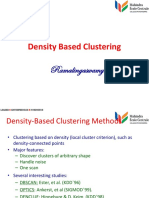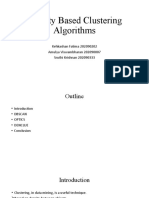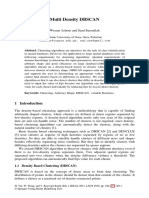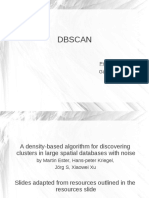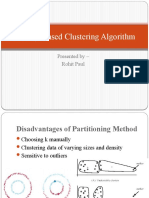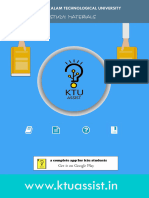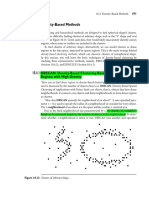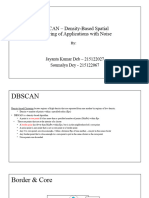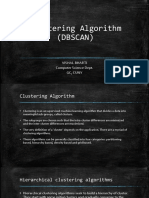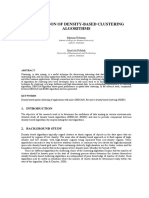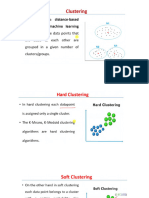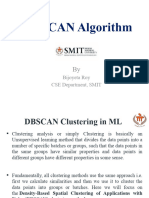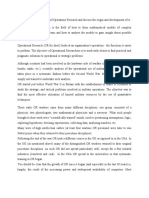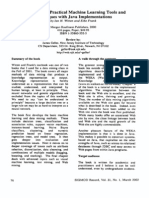0% found this document useful (0 votes)
23 views17 pagesDensity Based Clustering
Density-based clustering is a data mining technique that identifies clusters based on density distribution, effectively handling arbitrary-shaped clusters and noise without needing the number of clusters specified in advance. Key algorithms include DBSCAN, which groups data points based on density reachability, DENCLUE, which uses kernel-based density estimation, and OPTICS, which orders data points for varying density thresholds. The document provides an overview of these algorithms, their key concepts, and steps involved in the DBSCAN algorithm.
Uploaded by
Dr Aruna MalikCopyright
© © All Rights Reserved
We take content rights seriously. If you suspect this is your content, claim it here.
Available Formats
Download as PPTX, PDF, TXT or read online on Scribd
0% found this document useful (0 votes)
23 views17 pagesDensity Based Clustering
Density-based clustering is a data mining technique that identifies clusters based on density distribution, effectively handling arbitrary-shaped clusters and noise without needing the number of clusters specified in advance. Key algorithms include DBSCAN, which groups data points based on density reachability, DENCLUE, which uses kernel-based density estimation, and OPTICS, which orders data points for varying density thresholds. The document provides an overview of these algorithms, their key concepts, and steps involved in the DBSCAN algorithm.
Uploaded by
Dr Aruna MalikCopyright
© © All Rights Reserved
We take content rights seriously. If you suspect this is your content, claim it here.
Available Formats
Download as PPTX, PDF, TXT or read online on Scribd
/ 17


